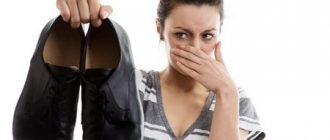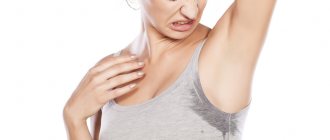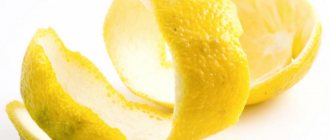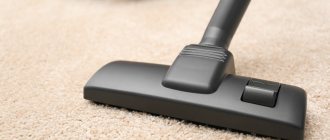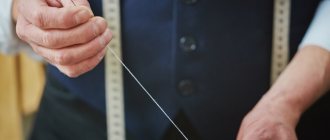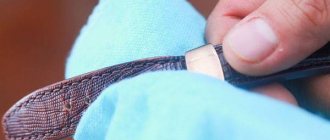How baking soda fights foot odor
Given the varying nature of the unpleasant odor of sweating feet, differences in the mechanisms of action of the soda used to combat the “aroma” are also taken into account. Water, when combined with soda, becomes a weak alkali, dangerous for microorganisms. The powder poured into shoes is affected by the moist air evaporating from within, which causes the same alkaline reaction, destroying the uninvited settlers who leave a “bad” odor. After a day there will be no smell left. Baking soda is hygroscopic, so it can absorb foreign odors.
The positive properties of sodium bicarbonate in combating foot odor include:
- the ability of soda to normalize the level of sweat secretion, stabilizing the acid levels of the upper layer of the skin;
- acceleration of wound healing with moderate sweating;
- the ability to dry due to friability, like powder: the pore openings are partially clogged, leaving oxygen in, but moisture does not pass through them.
Thanks to the strong antiseptic properties of this substance, odors left by bacteria feeding on sweat are neutralized.
Preventing foot odor
Reasons for appearance
There are 3 common causes of unpleasant odor.
New product
Shoes that are in new condition always emit a characteristic odor. This is normal. After some time of wearing it, it disappears.
Increased sweating
People whose shoes produce an unpleasant odor are diagnosed with hyperhidrosis. When the sweat glands are diseased, large amounts of sweat are produced. Excessive sweating is combated with medicinal methods.
Vital activity of bacteria
When sweat occurs, the inside of the shoe becomes damp. In turn, this is a suitable condition for the growth of bacteria.
Microorganisms, in the process of their activity, release products that cause the product to begin to smell.
Why do your feet start to smell?
Excessive foot sweating (hyperhidrosis) can be avoided by following hygiene rules:
- do not wear tight and narrow shoes;
- if the shoe material is artificial, make sure that it “breathes” and does not create a greenhouse effect;
- avoid wearing synthetic hosiery: they do not absorb moisture, creating a warm, humid environment where bacteria like to multiply;
- monitor your own weight, avoiding extra pounds that overload your legs.
Physical causes of sweating include excessive secretion of sweat by the glands, physical activity and high temperature outside, emotional experiences or stress. In addition, sweating is caused by rapidly multiplying microorganisms.
Sometimes excessive sweating:
- is inherited;
- appears with age-related changes (for example, menopause);
- manifests itself if the nervous system is disturbed;
- accompanies a disease affecting the endocrine system;
- with regular sports training.
About the properties of soda in the fight against sweating >>
Another unpleasant cause of foot odor is a fungal infection of the nails or skin of the feet.
In the favorable environment created by fungi, harmful microorganisms settle and multiply, releasing foul-smelling waste products.
General care recommendations
Any shoes require proper care. And white - even more so. To make the cleaning process easier in the future and maintain whiteness for a longer period, you need to adhere to the following rules:
- Do not wear light-colored shoes in the rain, especially if you have to walk a lot.
- Do not overuse machine washing, as the shoes may become deformed and become unusable. Boots or puffers should never be washed in a machine, in particular this applies to cheap products, which are often poorly sealed.
- Designate a separate storage space. A large number of stains on light-colored shoes appear after prolonged exposure to dark ones.
- Clean the soles regularly. It is necessary to carefully remove dirt from the relief. An old toothbrush works well for this.
- Always have a white office eraser on hand. If the slightest dirt appears, immediately wipe your shoes with it.
- Carry wet wipes in your bag. You can buy special wipes designed for cleaning white shoes.
- To maintain the original shape of leather products, you should store them stuffed with paper. But it is not recommended to use newspapers for these purposes, since printing ink can leave stains that will be difficult to remove.
- After purchasing genuine leather shoes, you should immediately wax them to reduce the risk of scratches and stubborn stains. For suede, you also need to purchase a special spray that protects against moisture and dirt.
- It is not recommended to leave white shoes for long periods of time in direct sunlight. This may cause fading and loss of whiteness.
Despite the fact that white shoes require special attention, proper storage and proper care will help extend their service life. And with regular cleaning you can update its appearance.
How to make baking soda baths
Soda baths were used to treat severe sweating and eliminate bad odors back in Ancient Egypt.
- To prepare a healing bath, pour a bucket of hot water (10 liters) into a basin and dilute 5 tablespoons of soda in it. The duration of keeping the feet in the bath is 15 minutes.
- Stir sea salt and soda (1 spoon each) into hot water (2 liters). Keep your feet for 15 minutes, remove dead skin with a special grater and wipe your feet dry.
- For 3 liters of water, take 1 spoon of soda, orange oil (5 drops) and olive oil (3 spoons). Duration of holding legs - 15 minutes.
- Pour water (2 l) into a basin, add soda and ammonia (2 spoons). Lower your legs for 20 minutes. To rinse, take clean water, then dry with a towel.
Foot baths with baking soda can be done daily to prevent sweat odor.
Baths for fungal infections of the feet are done after 1 day, and then treated with an antifungal drug.
- Fill a basin with water at 40 degrees. Add soda (2 spoons are enough for 5 liters) and 1 spoon of liquid soap. Stir the solution, place your feet, hold for up to 15 minutes. Do not dry, wait until it dries on its own. Then apply the medicine and put on cotton socks. The procedure is done every 3 days.
- Pour hot water (2 liters), add lemon, orange or tea tree oil (6 drops) and baking soda (1 spoon) as desired. Pour in olive oil (3 tablespoons), stir and leave your feet for 20 minutes. After the procedure, rinse your feet under the tap and dry with a soft towel.
Preventive baths, which can be done at least every day, will help to avoid severe sweating of the feet, accompanied by an unpleasant odor.
Benefit or harm?
Baking soda is found in every home, and the availability of this product makes it popular. Some people are surprised by the fact that baking soda helps fight sweating. However, the beneficial properties of soda are what really give it this effect: it reduces sweating. It is especially important that the work of the sebaceous glands is not blocked. Unfortunately, the principle of operation of most deodorants is undesirable due to their negative impact on the functioning of the sebaceous glands. Accordingly, the use of soda is safer.
The main advantage of deodorants prepared independently using soda is their natural composition. They do not contain harmful components present in industrial antiperspirants, which harm the health of the skin and the functioning of the sebaceous glands.
Let's look at the beneficial properties of soda:
- Antacid. Thanks to this property, baking soda has a positive effect on the skin by stabilizing the level of acid levels in the dermis. If the skin becomes dry due to the use of conventional deodorants, then the level of its acid-base balance is reduced. When a person sweats, this level increases sharply and soda is able to normalize the resulting imbalance.
- Antiseptic. Baking soda reduces the intensity of the sebaceous glands. It also speeds up the healing of skin lesions. Any commercial deodorant completely blocks sweating, at least for a short period of time, and soda reduces it by about 30%. This turns out to be quite enough for sweating to become moderate, but at the same time the skin “breathes”.
- Elimination of unpleasant odor. The smell of sweat can be so strong and pungent that not every deodorant will completely eliminate it. Baking soda removes alkaline deposits from the blood and skin, which prevents odor from developing. The absence of places where alkalis accumulate is the key to completely eliminating the smell of sweat.
- Drying. The texture of baking soda resembles loose powder. Their actions are also very similar. Baking soda clogs the pores, but does not clog them completely, so air access remains free. It turns out that the pores remain “open” to oxygen, but “closed” to moisture. Due to this, the armpits remain dry.
Harm from using baking soda as a deodorant is extremely rare. It can appear if the powder gets into open wounds, which will cause irritation and pain. Also, using the product will cause serious harm to the skin if applied daily.
Soda and vinegar for foot odor
Industrial deodorants only muffle the smell, and the content of aluminum salts makes the products unsafe for health. In this case, it is more useful to use the usual apple cider vinegar, which does not irritate the skin. It is added to the bath, compresses and lotions are made. In the created acidic environment, bacteria do not live or reproduce. Harmful bacteria also do not like the alkaline environment of soda.
Choose natural products for foot care
To get a positive effect, you should not use synthetic table vinegar, which contains no beneficial substances.
For treatment, it is advisable to purchase a bottle of an expensive natural product with organic acids and tannins - apple, wine, rice.
- Before use, 9 percent vinegar is diluted with boiled water (1 part of both). Baking soda is added if heels are cracked, feet have calluses or abrasions.
Proportions: water – 10 l; vinegar - half a glass; soda – 100 g.
Take a bath for 15 minutes.
- Prepare vinegar - 4 cups and soda (1 cup). Dilute the substances in the bath, then immerse completely for 10 minutes.
You can add variety
By mixing sodium bicarbonate with various aromatic additives, for example, dried sage leaves, chamomile, rose petals, you can not only eliminate unpleasant odors, but also make the inside of your shoes fresh and smell nice. Many people who have used this option have not regretted their experiment. For a variety of pleasant sensations, you can use anything - whatever you like, depending on the person’s preferences.
There is no need to add liquid aromatic additives to the soda powder, in which case it will absorb only this aroma and will not eliminate the smell of sweat - the main cause. It is better to use dry aromatic components if you want your shoes, boots or sneakers to smell good.
You can also remove any remaining deodorizing agent using a vacuum cleaner, or simply shake it out into a trash bag. But if the soda powder has absorbed as much moisture as possible from the inner surface and insoles of the shoes, then you cannot do without household appliances.
Soda for shoe odor
A common problem among older people and young people is shoes that smell bad after their feet get sweaty or after wearing them all day. Using a universal remedy - baking soda - eliminate unpleasant foot odor in slippers, shoes and boots. And how to use soda to get rid of the smell in shoes, the inside of which cannot be washed - it’s very simple, see for yourself.
Recipe 1. Method of using soda for foot odor in shoes:
- Pour dry soda (1 spoon each) into shoes, slippers, sneakers, and boots and, shaking, distribute evenly inside.
- Close the shoes in a plastic bag.
- Leave for 5-6 hours (allowed to be left until morning).
- Shake out the remaining soda.
- The procedure is repeated over the next 2 days.
Baking soda is a simple and effective way to remove unpleasant odor from shoes.
Recipe 2. Fight persistent odor and the stench of sweat in shoes with the help of paste:
- dilute 3 tablespoons of soda with water;
- Using an old toothbrush, apply the paste to the inside of shoes or boots, while scrubbing thoroughly;
- do not touch shoes until the morning;
- the next day, shake out the dried paste.
This is a proven method, no need to clean it again.
Recipe 3. Vinegar and baking soda help get rid of the smell of sweat in shoes
Mix baking soda and vinegar as for a dough quench. Using the resulting “boiling” mixture, which also disinfects, clean the insoles of your shoes and dry them.
Removing stains
Very often, dirty spots appear on the rubber sole or fabric, which spoil the entire appearance of snow-white shoes.
An excellent solution for cleaning stains is hydrogen peroxide, which is diluted with washing powder for whites. Saturate the stain with this mixture, rub well, and then rinse.
Rubber parts can be easily cleaned with nail polish remover or tooth powder with whitening ingredients. An alternative to tooth powder is baking soda. Powder or soda can be used safely for sneakers to clean all rubber parts.
Particularly stubborn stains are removed with stain remover sprays. Never wash in bleaches containing chlorine. As a last resort, you can try scrubbing the fabric with acetone.
Shoe deodorants
Specialized shoe cosmetics help to take care of your shoes, among which an indispensable item is a deodorant stick or spray that eliminates the unpleasant odor of sweat. Such products can be purchased at the store or prepared independently with soda. Homemade deodorants are harmless; they use only natural products.
When purchasing deodorant in a store or pharmacy, you should pay attention to the composition of the product. It is not recommended to take an anti-sweat product if it contains aluminum salts, triclosan, parabens, phthalates and propylene glycol. These substances have reliable antibacterial properties, but they threaten the beneficial microflora of the skin, liver and heart. In addition, an allergic reaction is possible.
To maintain health, deodorants with natural ingredients are suitable: with antimicrobial essential oils, with cleansing and absorbent substances - starch and soda. Anti-sweat products are available in the form of popular sprays, flavored tablets and pads, creams or sticks.
Recommended brands of shoe deodorants:
Russia produces a 125-milliliter aerosol can ().
Italy offers an inexpensive product - Cliven spray. The product has an antibacterial effect and is suitable for shoes made of any materials, but takes a long time to dry.
The French expensive deodorant - Mentol spray (Menthol) has a minty smell.
Sholl deodorant from the UK is considered a universal remedy. Suitable for natural and artificial leather, for shoes made of fabric and fur. Successfully fights fungal infections and harmful bacteria, eliminating sweat odor for a long time.
"Gehwol" (Gevol), a product made in Germany, is suitable for any shoe materials, but is expensive.
"Salamander", also from German manufacturers, is a quick-drying product. The substances destroy bacteria, unpleasant odors, and protect boots from moisture.
Method for preparing homemade soda deodorant for shoes:
The dry product is prepared from 4 tablespoons of soda and 4 tablespoons of starch. Lavender oil (8 drops) and the same amount of tea tree oil are added to the bulk products. The dry preparation is poured into shoes and cleaned with a vacuum cleaner in the morning.
Review of professional products
They are no less popular than traditional methods.
Salamander
It has an antibacterial effect and has a citrus aroma.
Salton
Particularly relevant among people whose feet sweat when wearing leather shoes.
Silver
Insoles with activated carbon with a deodorizing effect. Promotes normal air circulation in shoes.
